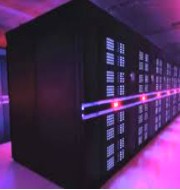Industry 4.0: Key Disruptive Trends and Factors
The term “Industry 4.0” denotes the Fourth Industrial Revolution. It includes the digital transformation of the entire value chain process involved in the traditional manufacturing and production methods.
How is Industry 4.0 different from Industry 1.0, Industry 2.0 and Industry 3.0?
The First Industrial Revolution, which started at the end of the 18th century was characterized by use of water and steam power to mechanize production. The Second Industrial Revolution started in the beginning of the 20th century and used electric power to create mass production. The Third Industrial Revolution started in 1970s and used electronics and information technology to automate production. And now, we all are witnessing a Fourth Industrial Revolution characterized by the fusion of latest technologies. It is building on at an exponential pace, and envisages transforming the entire systems of production, management and also governance. It is almost entirely based on the technological concepts of cyber-physical systems, the Internet of Things (IoT) and the Internet of Services, and the concept is highly recognized nowadays in most parts of the world.
Key Features and Benefits
They key features and benefits of Industry 4.0 are as follows:
- Firstly, it will immensely improve the operational efficiency and facilitate remote management.
- Secondly, the manufacturing industry fuelled with software driven services and innovation in hardware would increase the variety of products.
- Thirdly, collaboration between humans and machines can produce unprecedented results in terms of productivity and quality of products.
- Fourthly, it has huge potential to raise the income levels and quality of life of people around the world.
Disruptive trends of the so called Industry 4.0
The Industry 4.0 is marked by several disruptive trends. First, the highly increased automation may disrupt the labour market. Tough this would transform the labour driven Indian economy to machine intelligence-driven economy but may not end up creating jobs. Second, Industry 4.0 may lead to manufacturing of autonomous and highly destructive weapons, and use of artificial intelligence systems for remote control and use of programmed weapons. Such weapons could easily cause mass casualties when in wrong hands. Third, it may divide the labour market into the “low-skill/low-pay” and “high-skill/high-pay” segments, and increase the demand of highly skilled workers, thus, increasing the difference in income levels of people.
Importance of innovation, (IoT) and Big Data for Industry 4.0
Fourth Industrial Revolution is based on the technological concepts of cyber-physical systems, the Internet of Things, the Internet of Services, and Big Data.
- A Cyber-Physical System also called “smart system”, is an integration of computation, networking, and all physical processes such that the device communicate and interact with other device and physical world through use of sensors and actuators. It includes robot-executed surgeries, self-driven cars, autonomous unmanned vehicles and aircraft navigation systems.
- The Internet of Things (IoT) refers to the connection of devices such as cars, kitchen appliances, television, irrigation system and even heart monitors through Internet such that it facilitates with remote control of the devices. The integration of a number of IoT Deviceswould offer smart services called Inter of Services (IoS).
- Big Data is a broad term for large complex data that is difficult to process through traditional data processing system. It is intended to create data warehousing and used for business analytics to deliver high and efficient revenues for enterprises.
Each of the above have immense potential they have to bring the unprecedented change in the manufacturing, defense, logistics and healthcare sectors in the economy, and benefit the consumers, governments, and ecosystems through these technologies.
Model Question for GS Mains
What are the key disruptive trends of the so called Industry 4.0 (Fourth Industrial Revolution)? Discuss while highlighting the importance of innovation, Internet of Things (IoT) and Big Data for Industry 4.0. [Answer Here]


